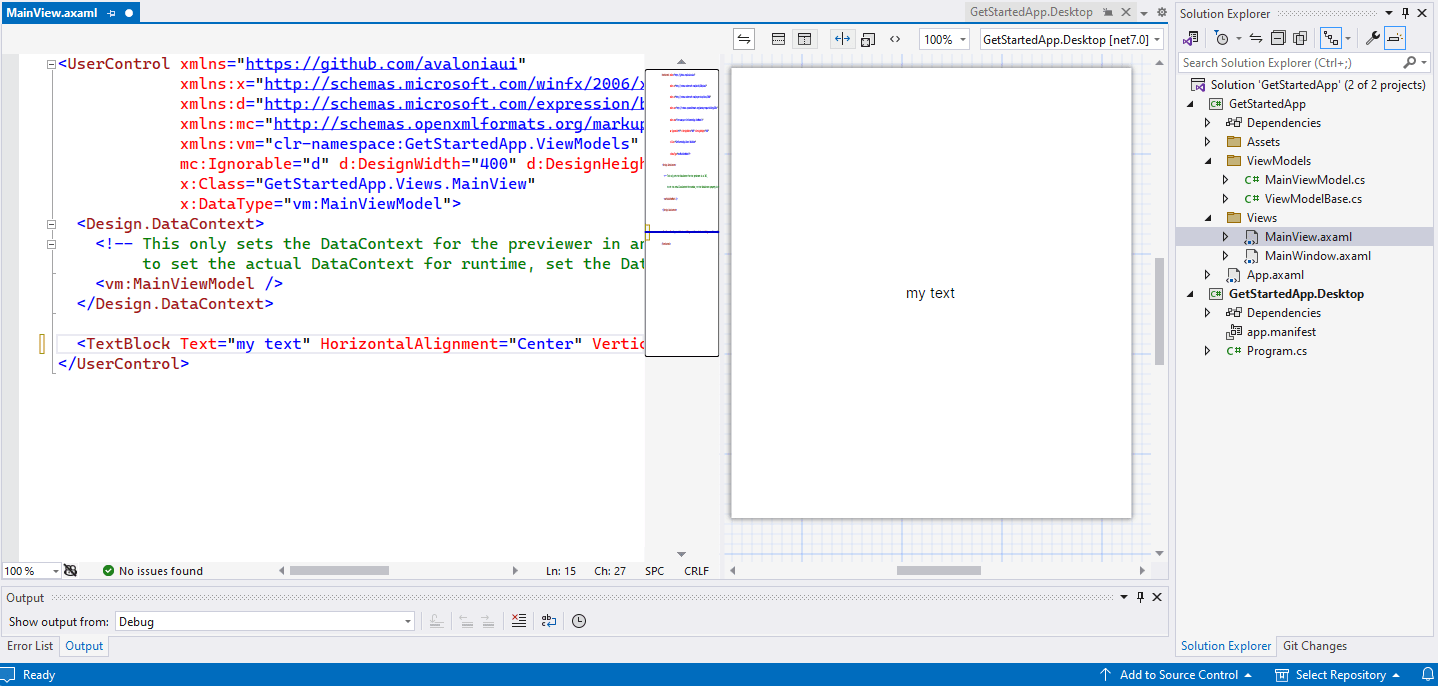The Main Window
You can now start your tour of an Avalonia project. We'll start with the main application window. Open the MainWindow.axaml file.
Notice that in Avalonia, XAML files have the extension .axaml (and not .xaml). This represents 'Avalonia XAML' and the file extension was introduced for technical reasons.
What is Happening?
In the MainWindow.axaml XAML file, the <Window>...</Window> XAML tag represents an Avalonia window. Like other Avalonia controls; the window will be drawn on the target platform with 4 layout zones: margin, border, padding and content.
In the current application, the content zone of the window references another view:
The MainView User Control
Inside this user control, you will see a <TextBlock>...</TextBlock> XAML tag. This represents a text block control. The Text property of the text block is bound to the Greeting property of the MainViewModel class. This is a property that will be set in the constructor of the view model class.
<TextBlock Text="{Binding Greeting}" HorizontalAlignment="Center" VerticalAlignment="Center"/>
You can change the text in the file MainViewModel.cs to see the change reflected in the user interface.

For more information about the concept of control layout zones, see here.
The Visual Studio Designer
If you're using Visual Studio you should see the XAML code and preview pane. Navigate to the MainView.axaml file and click the Split View button at the top of the editor window.

There may be a red exclamation icon (top left) and the message The designer is loading.... This indicates that the project must be built before the preview pane will respond.
- Build the project.
- Scroll the preview pane to the left to view the preview outline and the text displayed in the top left corner.
- Remove the binding
{Binding Greeting}and change the text<TextBlock Text="my text" ...
You will see the new text in the preview pane change as you type. This is an example of the Avalonia design-time preview behaviour that will help you develop user interface presentation accurately and quickly.
- Run the project to see your new text also appear at runtime.
On the next page you will see how to add a simple button to the window.